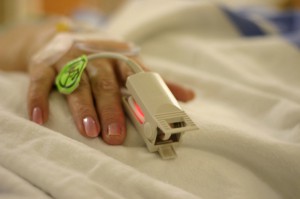DIVA in children with short bowel syndrome – Full Text

“We searched the literature to highlight the current management of children with vascular exhaustion, specifically focusing on vascular access salvage strategies and last-resource alternative routes to central veins” Grimaldi et al (2022).
Ultrasound guided peripheral IV access for DIVA patients – Full Text

“This study utilized a scoping review methodology to map the literature pertaining to non-physician use of POCUS to improve success of peripheral intravenous access (PIVA), especially in patients predicted to be difficult to cannulate” Burton et al (2022).
DIVA in paediatric intensive care

“We found a low success rate at first attempt and a high proportion of DVA. More nurses and time were employed during cannulation and complications increased if the patient had DVA” de la Vieja-Soriano et al (2022).
Patients self-identify as having difficult peripheral IV access – Full Text

“This is the first prospective study to assess the effect of various interventions to empower patients to self-identify as having difficult PIVC access and advocate for the use of US-guidance” Libbis et al (2022).
Ultrasound-guided peripheral IV cannulation for dental sedation – Full Text

“The application of ultrasound-guided peripheral intravenous cannulation should be considered for patients with DIVA who require intravenous dental sedation or other common procedures in dental surgery that involve cannulation” Khan (2022).
Pediatric difficult intravenous access – Full Text

“Black non-Hispanic race/ethnicity, younger age, obese/overweight body mass index, American Society of Anesthesiologists physical status III, and ultrasound were all associated with pediatric difficult vascular access in the operating room” Ballard et al (2022).
Identifying children with difficult intravenous access – Full Text

“The DIVA Key is a straightforward, reliable instrument with inbuilt escalation pathway to support the identification of children with difficult intravenous access” Schults et al (2022).
Novel approach to difficult intravenous access – Full Text

“I would like to recommend a novel technique using the Vygon Arterial Leadercath polyethylene (PE) kit (Vygon, Ecouen, France) as a coaxial introducer for wider-bore cannula, in cases of difficult intravenous access (DIVA)” Stagg (2021).
Defining difficult intravenous access

“Considering the themes identified, an evidence-driven definition of DIVA is proposed: “when a clinician has two or more failed attempts at PIV access using traditional techniques, physical examination findings are suggestive of DIVA (e.g. no visible or palpable veins) or the patient has a stated or documented history of DIVA” Bahl et al (2021).
AccuVein in children review

“This device can therefore be used according to the healthcare professionals’ situation and needs. It is widely used in paediatric wards, and our study shows that it offers a support tool that reassures healthcare professionals and helps validate their choice of vein easiest to catheterise” Usclade et al (2021).
Difficult peripheral IV cannulation

“A few easy-to-identify risk factors can differentiate difficult to cannulate (DIVA) patients” Sweeny et al (2021).
Multiple peripheral IV catheter insertions case study

“Despite a lack of intravenous access, the patient improved with oral antibiotics, oral pain medications, and oral rehydration” Silk et al (2021).
Near infrared vein viewer technology performance verified

“Transillumination devices differ in their technical characteristics and performance. The choice of the device should be based on the needs of the particular patient population and the intended use of the device” Dorotić et al (2021).
Vascular access care in patients with multimorbidity

“Multimorbid patients with DIVA have a higher rate of complications as well as requiring more catheters and more placement attempts” Armenteros-Yeguas et al (2021).
Biplane ultrasound imaging for vascular access – Full Text

“We detail the first reported use of biplane imaging using a portable ultrasound probe for difficult vascular access” Convissar et al (2021).
Difficulty of peripheral venous cannulation during anesthesia induction in children

“The success rate of anesthesiologist-performed PIVA at the first attempt in the OR was 75.3%. Having a chronic disease, a DIVA score ⩾4 and being underweight appeared as the independent predictors for difficult PIVA” Keskin et al (2021).
Study of DIVA patients who need peripheral IV access

“Patients with difficult vasculature sometimes require multiple attempts to obtain SPC access” Plohal (2021).
Comparison of long peripheral IV catheters in patients with DIVA

“The aim of the study was to compare the frequency of complications of two types of long peripheral catheters with different length inserted in DIVA patients” Pavelkova et al (2020).
Impact of ultrasound on difficult intravenous access

“DIVA affects many ED patients and leads to delays in PIV access-related care. Nurse insertion of USGPIVs improves care in patients with DIVA” Davis et al (2020).
How to identify difficult intravenous access in paediatric patients?

“We externally validated the DIVA and DIVA3 showing a similar accuracy compared with the DIVA derivation cohort and between DIVA and DIVA3” Girotto et al (2020).
Adult-difficult venous catheterization scale for emergency departments

“The Adult-Difficult Venous Catheterization scale is a valid and reliable instrument for predicting difficult venous access in emergency departments” Salleras-Duran et al (2020).
Prevalence of factors associated with difficult peripheral IV access

“History of difficult intravenous access and a nonvisible venous network were significant predictors of peripheral cannula insertion failure in adults undergoing clinical surgery. The prevalence of difficult intravenous access was 32.8%” Dat et al (2020).
Is obesity associated with increased difficulty placing peripheral IVs?

“Obesity was not associated with increased difficulty in placing peripheral IVs in trauma activation patients. Nurses with greater trauma experience and higher self-competence ratings, had less difficulty inserting IVs” Barksdale et al (2020).
How to develop a nurse-led ultrasound-guided peripheral intravenous service

“Overall, the program effectively demonstrated a decrease in the number of attempts required to insert a peripheral venous catheter in patients with difficult venous access” Stuckey and Curtis (2019).
Successful peripheral IV cannulation and needle tip design

“We developed short bevel needles with a very thin tip and evaluated their puncture performance in two in vitro models” Tanabe et al (2020).
Handheld ultrasound for difficult peripheral intravenous access

“The purpose of this study was to evaluate the performance of a handheld ultrasound device for difficult peripheral intravenous (PIV) access performed by nurses and paramedics in the emergency department” Acuña et al (2020).
Risk factors for difficult peripheral IV cannulation and vascular access team referral – CE activity

“The aim of this study is to consider these risk factors, to determine the influence of the hospital setting, to examine the association between DPIVC and the different techniques of catheter insertion and to analyse the importance of the clinician’s experience in this context” Rodriguez-Calero et al (2020).
Risk factors associated with difficult peripheral venous cannulation

“This study intends to identify risk factors associated to the incidence of ‘difficult peripheral venous access’ in adults at hospital” Rodríguez-Calero et al (2020).
Midline or long peripheral catheters in difficult venous access conditions?

“Midline catheters (MCs) are commonly inserted in patients with difficult venous access (DVA) needing peripheral access. Recently, the alternative placement of ultrasound-guided long peripheral catheters (LPCs) has spread” Fabiani et al (2020).
Difficult guidewire insertion for central venous access

We describe the application of continuous image intensification to successfully identify the anatomical location and safe circumnavigation of guidewire obstruction during the insertion of a central venous and pulmonary artery catheter for cardiac surgery” Weinberg et al (2020). Abstract: PRESENTATION OF CASE: A 56-year old male presented for an elective redo-sternotomy, aortic valve replacement, tricuspid […]

